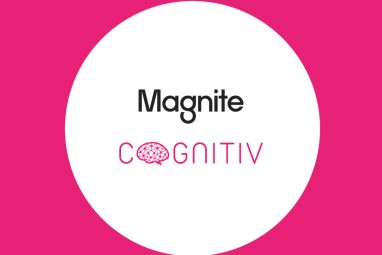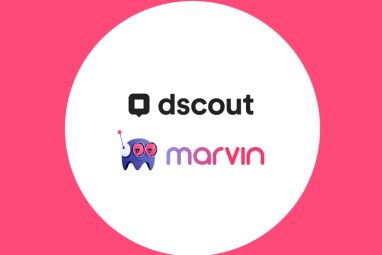Researchers Monitor Dynamic Brand Health
What do people really think of you? Big brands are always trying to find the answer to that question. Now a new method from researchers at the University of Maryland’s Robert H. Smith School of Business makes getting a read on consumer sentiment easier and more accurate than ever. Maryland Smith’s Kunpeng Zhang and Wendy […]
Topics
What to Read Next
- TripleLift Announces Partnership with Attain to Unify Context and Commerce
- Seedtag Partners with IRIS.TV to Expand Contextual Signals for CTV Targeting
- Magnite, Cognitiv Announce Deep Learning Integration for Real-Time Curation
- Dscout Announces Integration with HeyMarvin
- Comscore Launches Program-Level Capabilities within CCM

What do people really think of you? Big brands are always trying to find the answer to that question. Now a new method from researchers at the University of Maryland’s Robert H. Smith School of Business makes getting a read on consumer sentiment easier and more accurate than ever.
Maryland Smith’s Kunpeng Zhang and Wendy W. Moe have created a new machine-learning algorithm that can sort through social media posts to understand how consumers perceive particular brands. And while social media monitoring isn’t new – brands have been doing this for many years – Moe and Zhang’s method can comb through more data and better measure favourability.
Zhang, an assistant professor of decisions, operations and information technologies, and Moe, Dean’s Professor of Marketing, associate dean of master’s programs and co-director of the Smith Analytics Consortium, detail their new algorithm in ‘Measuring Brand Favorability Using Large-Scale Social Media Data’ forthcoming in Information Systems Research.
So why is Zhang and Moe’s algorithm better than what brands are already doing? Their method sifts through data from social media posts on a brand’s Facebook page – including how many people have expressed positive sentiments, negative sentiments, ‘liked’ something, shared something – to predict how people will feel about that brand in the future.
“There is a vast amount of social media data available to help brands better understand their customers, but it has been underutilised in part because the methods used to monitor and analyse the data have been flawed,” Moe says. “Our research addresses some of the shortcomings and provides a tool for companies to more accurately gauge how consumers perceive their brands.”
Zhang and Moe compared their algorithm’s findings against survey data of 100 brands from 2015, 2016 and 2017 to verify how well it works. In the past, brand managers had to rely on consumer surveys to monitor a brand’s perception, a time-consuming and expensive endeavour that became outdated before the surveys could even be analysed.
“Consumer surveys have several shortcomings,” says Zhang. “They involve a big investment of money and time. And the results are static, not dynamic – they are not timely. Plus, you have to design different surveys for different types of brands.”
“For our method, we only rely on publicly available social media data and it’s dynamic – we can update this data as time goes on,” he says.
Another huge boon for Zhang and Moe’s new method: Scalability. “None of the statistical models can handle such large datasets,” says Zhang. “We have billions of pages of user-brand interaction data and we can include millions of users on social media.”
Also Read: Brands Relook Digital Ad Strategy as Users Guard Privacy
Zhang and Moe collected and examined Facebook data for more than 3,300 brands and about 205 million unique users that interacted with those brands via their Facebook brand pages. Their dataset was immense, containing 6.68 billion likes and full text for more than 1 billion user comments, creating a sizable challenge for any statistical modelling effort. But they managed to do so with a framework – using a technology called a block-based MCMC sampling technique – that can be implemented by any brand to more accurately measure consumer opinions using social media data.
Their algorithm looks at users’ interactions with brands to measure favorability – whether people view that brand in a positive or negative way. The researchers’ method takes into account user biases commonly displayed on social media. The algorithm can infer brand favorability and measure social media users’ positivity, based on their comments in the user-brand interaction data. When a positive person sees a favourable brand, they are more likely to provide a positive comment. The converse is also true: a negative person is more likely to give a negative comment.
Brands can use the algorithm with various social media platforms – Facebook, Twitter, Instagram – as long as the platform provides user-brand interaction data and allows users to comment, to share and to like content, says Zhang. The researchers don’t use private information, like user demographics, and rely only on user-brand publicly available interaction data.
“User engagement with your brand, plus user engagement with other brands, is publicly available on Facebook and other social media platforms,” Zhang says. “As a brand manager, you can collect this data, then use our algorithm, which can provide you with the dynamic brand favorability.”
It’s as simple as brands taking the new algorithm and incorporating it into the social media monitoring many are already doing. Collecting this information is critical for brands, say the researchers.
“A brand needs to monitor the health of their brand dynamically,” says Zhang. “Then they can change marketing strategy to impact their brand favourability or better respond to competitors. They can better see their current location in the market in terms of their brand favorability. That can guide a brand to change marketing strategies.”









































































































